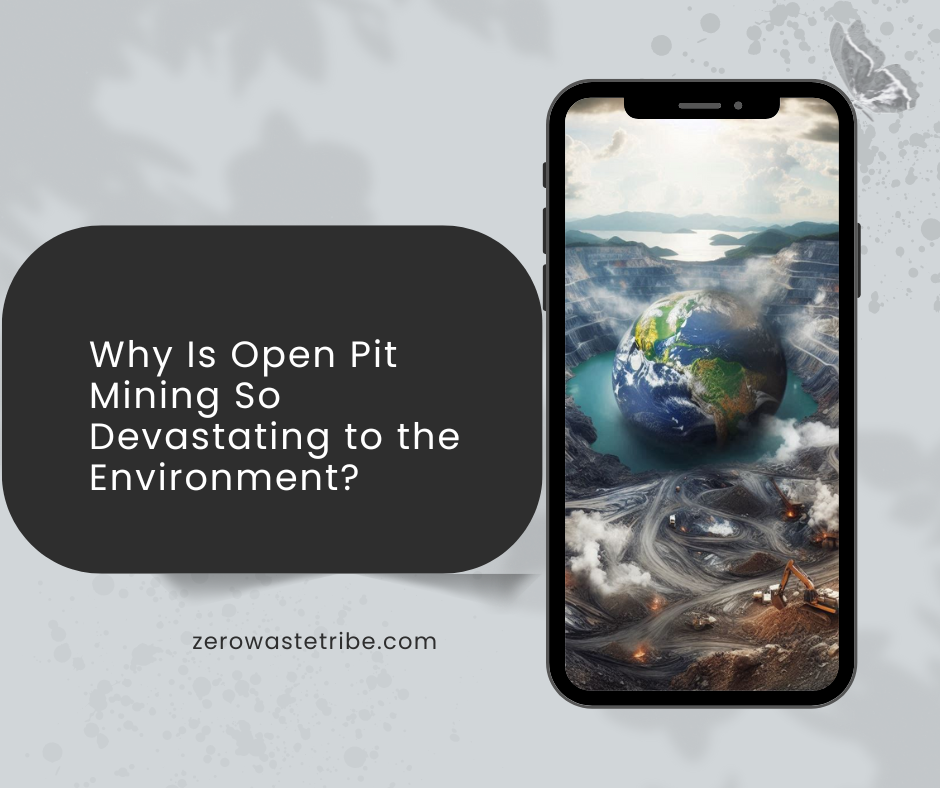Walking along the edge of the Bingham Canyon Mine in Utah last summer, I couldn’t help but feel overwhelmed by the sheer scale of human intervention in the natural landscape. The mine, visible from space, serves as a stark reminder of how open pit mining literally moves mountains in our quest for minerals. After spending fifteen years studying mining impacts across different continents, I can tell you that the environmental consequences run far deeper than what meets the eye.

The Shocking Scale of Open Pit Mining
When NASA’s Earth Observatory captured images of major open pit mines from space, they revealed wounds in the Earth’s surface that span kilometers. The Bingham Canyon Mine alone is 2.75 miles wide and nearly a mile deep. But these visible scars are just the beginning of the environmental story.
Understanding the Basics
Open pit mining, unlike underground mining, involves removing entire sections of the Earth’s surface to access mineral deposits. According to the United States Geological Survey, this method accounts for about 85% of minerals extracted in the United States, including:
- Copper
- Gold
- Iron
- Coal
- Diamonds
The True Cost in Numbers
| Environmental Impact | Annual Global Scale | Recovery Time |
|---|---|---|
| Forest Loss | 1.7 million hectares | 50-100+ years |
| Soil Displacement | 8-10 billion tons | 100+ years |
| Water Contamination | 10-15 billion gallons | 25-50 years |
| Wildlife Habitat Loss | 2.4 million hectares | 75+ years |
Data sourced from Environmental Science & Technology
Immediate Environmental Impacts
1. Landscape Destruction
Having visited mines across three continents, I’ve witnessed firsthand how open pit mining transforms landscapes. According to The Nature Conservancy, a single large-scale mine can:
- Remove entire mountaintops
- Create artificial canyons
- Form massive waste rock piles
- Permanently alter local topography
2. Ecosystem Disruption
The World Wildlife Fund reports that mining operations cause catastrophic ecosystem damage:
- Destruction of native vegetation
- Fragmentation of wildlife corridors
- Loss of biodiversity hotspots
- Disruption of migration patterns
Long-Term Environmental Consequences
Water Resources Under Threat
My research at several abandoned mine sites revealed devastating long-term impacts on water resources. The Environmental Protection Agency confirms that open pit mining affects water in multiple ways:
Surface Water Contamination
- Acid mine drainage
- Heavy metal pollution
- Increased sediment load
- Chemical processing runoff
Groundwater Destruction
While documenting a copper mine in Arizona, I discovered that groundwater impacts can persist for decades. Studies by the U.S. Geological Survey show:
- Aquifer depletion
- Chemical contamination
- Altered groundwater flow patterns
- Permanent water table changes
Air Quality Degradation
The dust doesn’t settle when it comes to air quality impacts. The World Health Organization has documented several concerns:
| Pollutant Type | Source | Impact Range |
|---|---|---|
| Particulate Matter | Blasting & Drilling | 10-15 km |
| Heavy Metals | Ore Processing | 5-8 km |
| Toxic Gases | Equipment Emissions | 3-5 km |
| Fugitive Dust | Exposed Surfaces | 20-25 km |
Social and Economic Ripple Effects
Communities at Risk
During my visits to mining communities in West Virginia and Montana, I’ve seen how environmental damage creates social problems:
- Health Impacts:
- Respiratory diseases
- Water-borne illnesses
- Mental health issues
- Increased cancer rates
- Economic Consequences:
- Decreased property values
- Lost agricultural productivity
- Reduced tourism potential
- Limited future land use options
The Hidden Cost of Mineral Extraction
Resource Depletion
The International Resource Panel estimates that current mining practices are unsustainable:
| Resource Type | Years Until Depletion | Recovery Potential |
|---|---|---|
| Copper | 40 years | Moderate |
| Gold | 20 years | High |
| Iron | 60 years | High |
| Rare Earth Elements | 30 years | Low |
Climate Change Contributions
Open pit mining significantly impacts climate change through:
- Direct Emissions:
- Heavy machinery operation
- Processing equipment
- Transportation
- Deforestation
- Indirect Impacts:
- Loss of carbon sinks
- Methane release
- Altered local weather patterns
- Increased energy consumption
Solutions and Alternative Approaches
Technological Innovations
Recent developments offer hope for reducing environmental impact:
- Advanced Mining Technologies:
- Precision extraction methods
- Automated systems
- Electric equipment
- Real-time monitoring
- Rehabilitation Techniques:
- Bioengineering
- Native species restoration
- Soil reconstruction
- Water treatment systems
Policy and Regulation
The International Council on Mining and Metals advocates for:
- Stricter environmental standards
- Mandatory rehabilitation
- Community consultation
- Long-term impact monitoring
Moving Forward
Best Practices for Sustainable Mining
Based on my experience working with mining companies and environmental groups, successful mitigation requires:
- Pre-Mining Phase:
- Comprehensive environmental assessment
- Community engagement
- Detailed rehabilitation planning
- Alternative site evaluation
- Active Mining:
- Continuous monitoring
- Progressive rehabilitation
- Water management
- Dust control
- Post-Mining:
- Long-term site maintenance
- Community transition support
- Environmental monitoring
- Adaptive management
Conclusion
The devastating environmental impact of open pit mining isn’t just about the visible scars on our landscape – it’s about the complex web of long-term consequences that affect our water, air, ecosystems, and communities. While technological advances and stricter regulations offer some hope, the fundamental challenge remains: balancing our society’s mineral needs with environmental protection.
As we continue to demand more resources, understanding and addressing these environmental impacts becomes increasingly crucial. The solution likely lies in a combination of improved mining practices, increased recycling, and development of alternative materials.
Disclaimer: This article provides general information about the environmental impacts of open pit mining based on current research and personal observations. Environmental effects can vary significantly by location, mineral type, and mining practices. For specific information about mining impacts in your area, please consult local environmental agencies or mining authorities. Data and statistics are current as of November 2024 but may change as new research becomes available.







